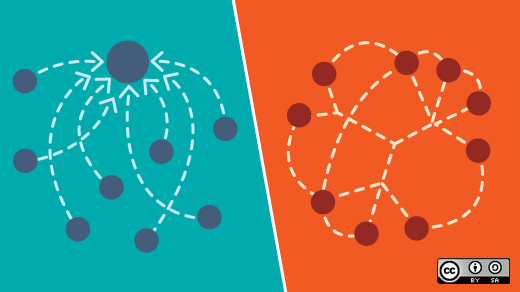In this final episode of our three-part interview with Braxton (part of the "Managing with Open Values" series) we discuss the importance of creating a positive environment for teams.
In June 2018, Braxton reached out to Red Hatters in the Open Organization community. He wanted to learn more about how both he and his team could work differently, using open values. We were happy to help. So I helped organize a workshop on open organization principles for Braxton and his team—and kept in touch afterward, so I could learn about his adventure in becoming more open.
Along with industrial/organizational psychologist and expert in associate engagement Tracy Guiliani, as well as Bryan Behrenshausen, Braxton and I discussed how shifting his mindset to manage according to open values involved thinking and acting differently, rethinking the purpose of some of the work his team was doing. With regard to something he called "radical transparency," the question he asked himself wasn't merely "who needs this information?" but "who could use or who wants this information?"—thereby expanding the principle of transparency from one centered on a need-to-know requirement to one centered on the benefits of knowledge sharing.
In addition, Braxton demonstrates how the path to a more open team culture is organic, created by the team for the team, emerging in its own time through the involvement and participation of the team community. It "wasn't painful but it wasn't fast." he says. Too often, leaders have schedules that can undermine the adoption of cultural change, but having a flexible timeline is something that open leaders must embrace and allow for if they want open values to take root and thrive in the organization.
This is particularly important because each transition to open is built on the last. In fact, the work of Braxton and his team is now focused on inclusivity, on helping associates have a stronger voice in how their organization makes decisions, something that would be more difficult if not for the basis of information sharing, shared purpose, and other demonstrated benefits of managing with open values.
Listen to the interview with Braxton
Listen to our final discussion with Braxton to learn:
- How Braxton changed his management practices via open values and practices, and what he's done differently to create an open ecosystem—an environment of belonging, respect, and mutual support.
- The way open values made a difference to his team (Braxton discusses how he worked in the past and how open values changed his management style and he describes the new open way of creating performance goals with his team).
- How trust is the important ingredient for team formation and employee engagement.
- The importance of increasing the transparency and collaboration of decision-making, which is a hierarchical process that they are working to make more open for individual contributors to help them investigate, research, and advocate for their views.









Comments are closed.